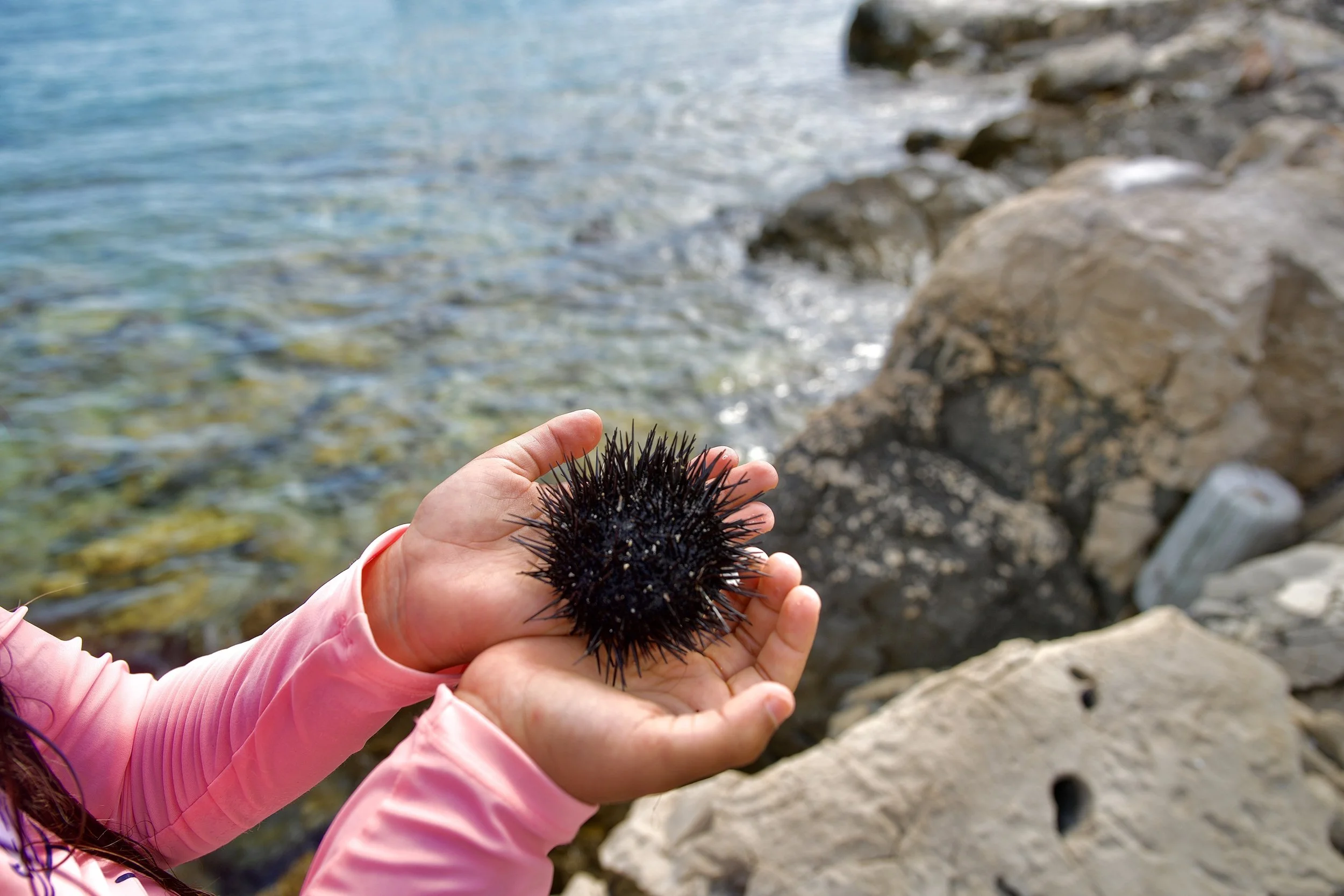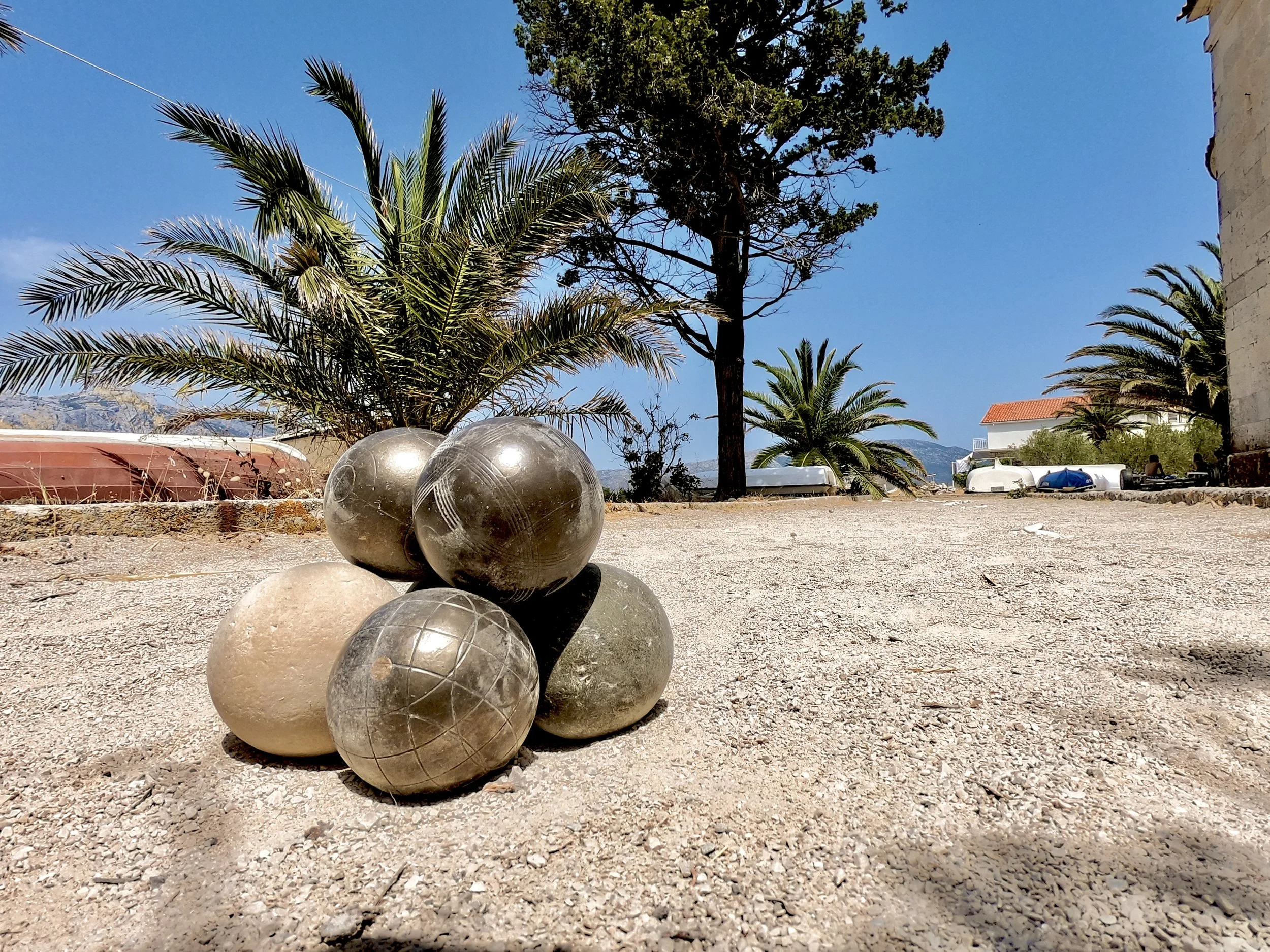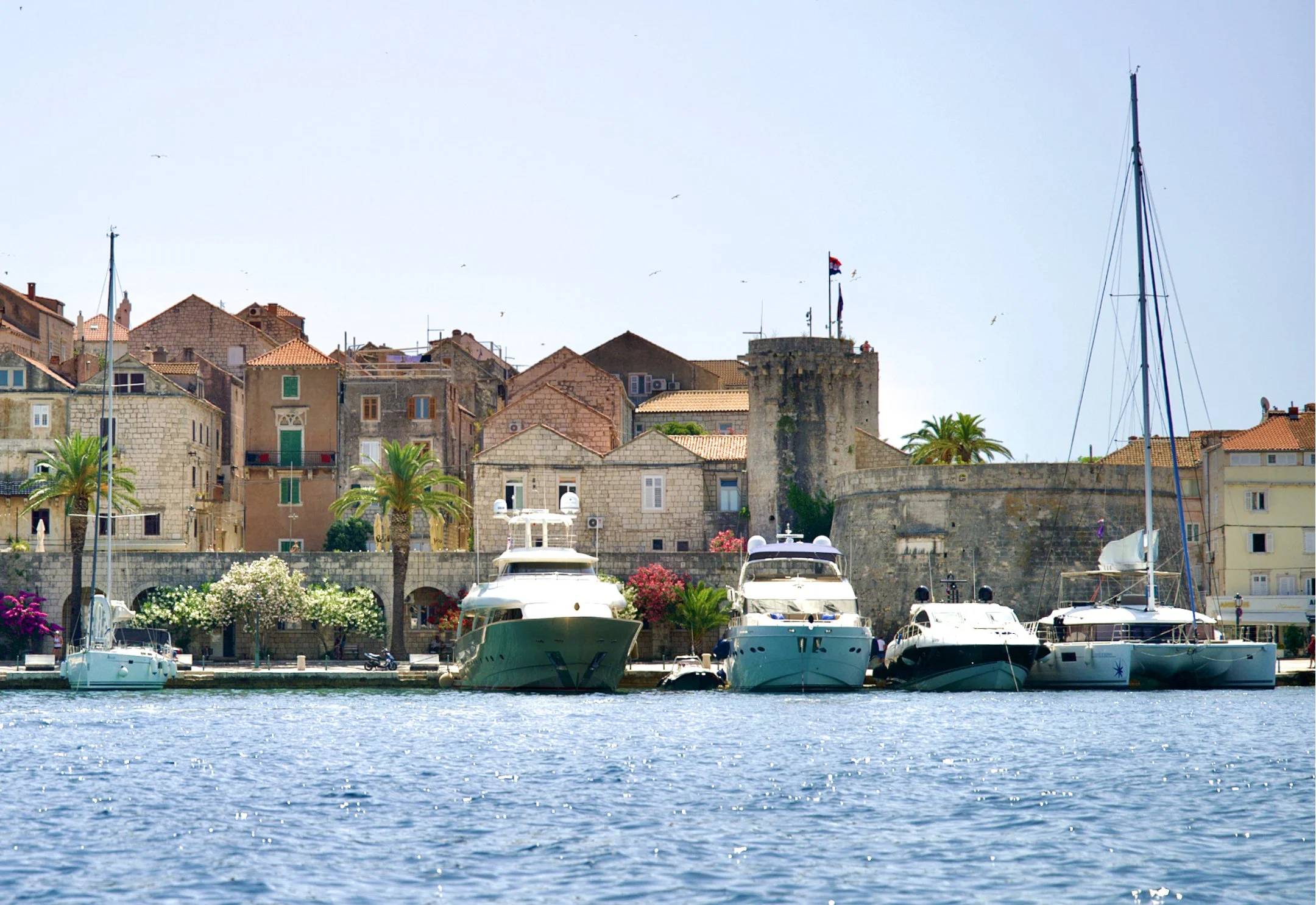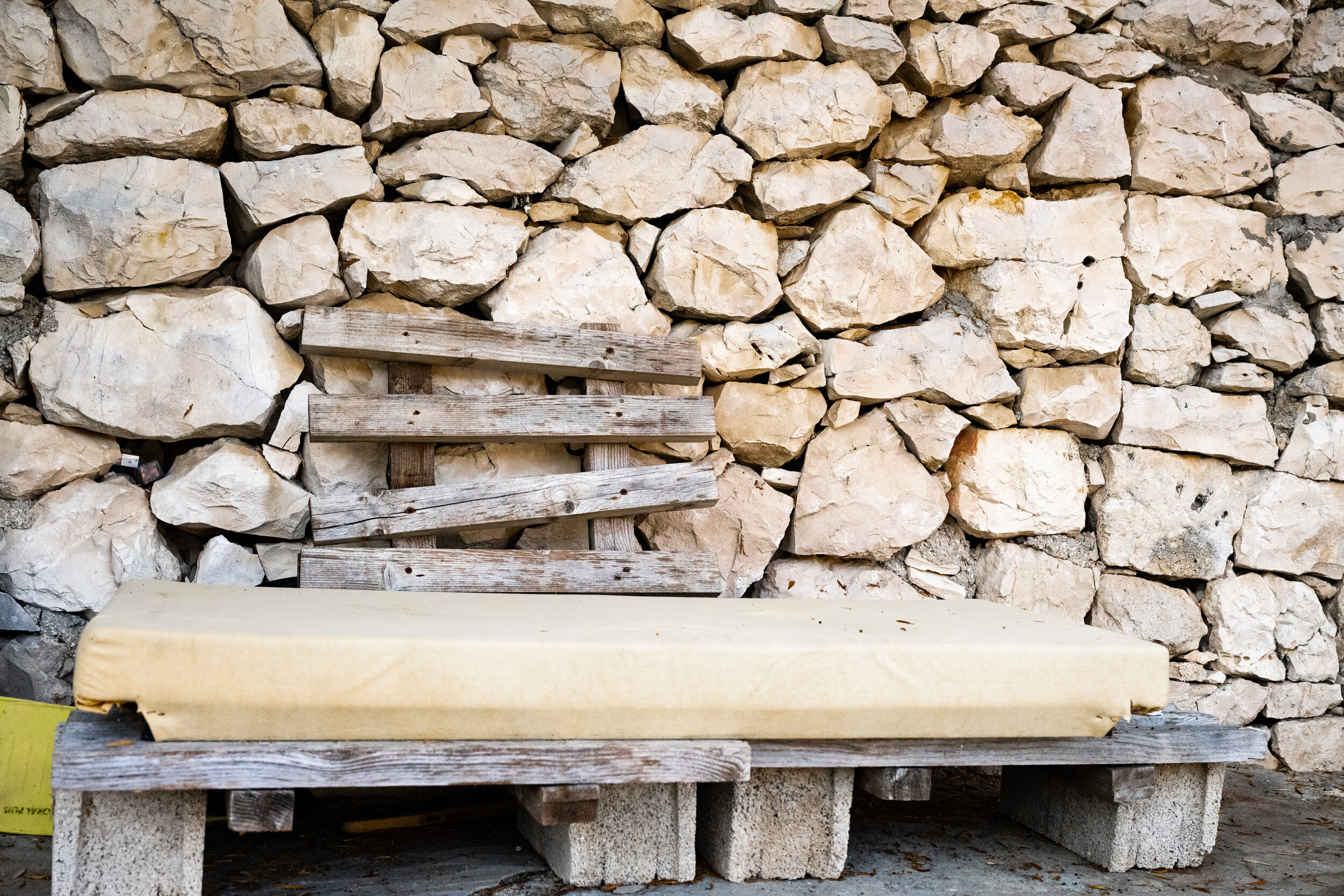Episode 93
Halo, dragi prijatelji!
In this episode we are learning words requested by one of our special young listeners.
Body parts!
Yes, hair, fingers and toes!
Everything goes!
Let’s get to it!
Lesson - Body Parts 2
Hair - kosa
Hairstyle - frizura
Finger - prst/prstima
Thumb - palac
Pinkie - mali prst
Toe - nožni prst/nožni prstima Ring - prsten
Earrings - naušnice
Beard - brada
Super Slatko Report
Sea Urchins, known as ježevi to the locals, have another name; Paracentrotus Lividus. These little guys fall into the family Parechinidae, and are commonly known as Purple Sea Urchins. And according to Wikipedia, are commonly found in the Eastern Atlantic Ocean, The Mediterranean Sea and of course the Adriatic Sea.
In general Sea Urchins have a spherical shape to them, made up primarily of spines which are attached to it’s Test.
Test - is a term used in Biology referring to a spherical shell/ skeletal structure that protects it’s inner organs.
Interesting fact, a 2012 study on a Sea Urchins’ Test, shows that it’s made up of:
92% Calcite - which is hard and protective
8% Lime - which is light and flexible.
The lime itself is almost completely made up of 99.9% Calcium Carbonate.
Meaning that a Sea Urchins skeleton is extremely mineralized, similar to rocks, which makes for excellent fossils.
If you have ever spent much time in the same water a few days back to back, you may have noticed that the Sea Urchins don’t stay put. One day a group of them can be by the pier or most, and the next day they can be in cluster somewhere else completely. How do they get from place to place?
They use their feet, their Tube Feet.
Sea Urchins, Sea Stars, Sand Dollars and Sea Cucumbers to name a few; all have these tube shaped feet to get from place to place. On a Sea Star, there are thousands of these little bristle looking tube feet on their under side that make them move. Like the Sea Star, a Sea Urchin has a bunch of short Tube Feet on its underside, but only near its mouth, those are there to help it move very slowly and help it eat. But the Sea Urchin also has longer tube feet that protrude past their spines that hydraulically inflate with water when needed. Once inflated the tube feet use muscles within each tube foot that can help position itself, as well as act as a way of finding food. The Tube Feet also have what look like little caps at the end of each foot that allow for an adhesive grip to its surroundings. By using a combination of these two different lengths of tube feet, a Sea Urchin is able to move, grip onto sheer rock faces and flip itself over if needed.
Interesting Fact: It was once thought that each tube foot had suction cups at the end, but upon closer observation, its actually a chemical adhesive secreted to allow for the grip they obtain.
Sea Urchins have no eyes for vision, at least how we know understand vision. A 2011 study on Sea Urchins Tube Feet found that they are made up of light sensitive cells. Meaning that the Tube feet are able to discern light from dark and even shapes. In this case you can think of a Sea Urchin as a large compound eye. The 2011 study placed a Sea Urchin in a round tank and projected white, grey and dark shapes on screens to gauge responses. Scientists found that depending on the shape, height and color projected; a Sea Urchin could protect itself by pointing/aiming its Spines in the direction of that shape. The Sea Urchin could try and seek refuge into a dark shape for protection; like a hole or perhaps into a large community of Sea Urchins. The article where I found the study concludes that although a Sea Urchins vision is rather crude when compared to a humans vision, but for an animal with no actual eyes, a Sea Urchin has pretty good vision.
Lastly a few key notes about our Purple friend, Paracentrotus Lividus. He likes high salinity, rock pools, and barren grounds. Ježevi are known to eat, red, green, brown algae as well as sea grass; and they tend to be nocturnal feeders. Their main predators tend to be fish, starfish and humans.
I hope you learned a few things about the Sea Urchin that you may not have known before. And the next time you get in the water with them, do be sure to put on your swim shoes and avoid stepping on them. Just know that they’re watching you and they would move out of the way if they could go any faster.
And that’s it for the Super Slatko Report






